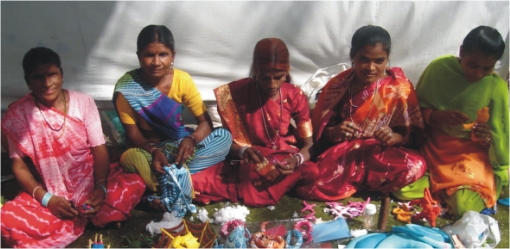Humanitarianism or Imperialism?
Posted on December 8, 2010 | posted by:A Worm’s-Eye View…
We really look forward to our Lunch in Progress series, in which prominent personalities of NYC, in design and relevant circles, come to the TD studio to converse with us over lunch. Our first visit by Bruce Nussbaum led to an animated discussion on ethics parallel to Humanitarian design. Western designers are increasingly viewing developing nations as areas of opportunity for design intervention. His blog “Is Humanitarian Design the New Imperialism?” (Fast Company, July 7, 2010) is in view of the fact that such involvement has been seen by some as presumptuous.
The designer’s world is so drastically different; can they attempt to solve problems of nations that they are not a part of? Can their interventions translate beyond social, economical and cultural barriers leading to development, which is sustainable?
The thought that comes to my mind is that whether humanitarian design is taking place on a global plane, across countries, or on a smaller scale, don’t the same questions arise? Isn’t the world of the designer always different? For instance in a developing country like India, although it is one of the fastest growing economies of the world, there is still a significant disparity in the standard of living, especially between the cities and rural areas. Not only for the western designer, It can be very difficult for most of the Indian urban designers to fully comprehend the social, economic and cultural differences in the poorer parts of the country. For instance there are world-class medical facilities in Indian cities, whereas many rural areas have marginal medical conveniences. Growing urbanization and westernization in the cities, which is the hub for design circles, also leads to a loss of touch with ones traditional culture. To overcome this gap, Indian design schools encourage craft and rural development projects as a major part of the curriculum. I have also been a part of a Craft Cluster Development project for indigenous woman artisans in the tribal district of Jhabua in India. Through such projects, young designers of tomorrow become aware of the challenges faced in addressing social issues within marginalized communities.
So although the cultural gap is much smaller in the case of the local designer, similar hurdles can come in the way too. All designers addressing humanitarian issues, whether local or not, need to consider these obstacles (and the criticisms that come parallel to it) and use them to understand the reality of the situation and strengthen their approach to the path they have chosen. There needs to be a sincere commitment to ensure long-term and sustainable solutions through bottom up approaches and localized collaborations. Clearly there will always be failures, but there has also been success. A lot of good design can be and has been done through humanitarian design.
